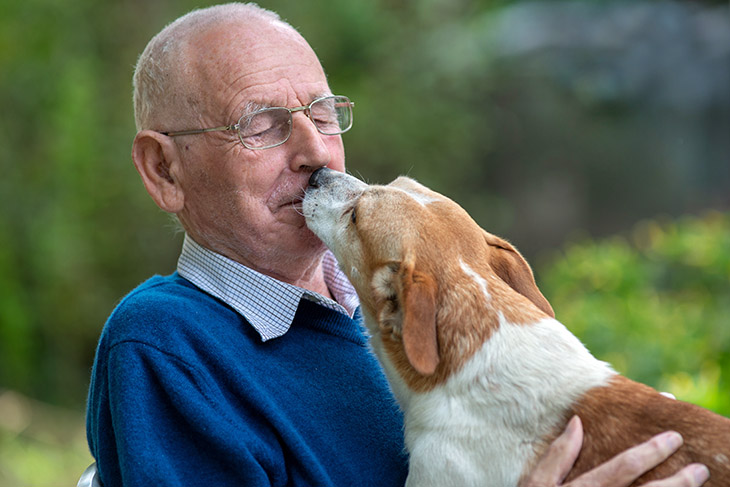Animal therapy, also called pet therapy or animal assisted therapy, refers to various services using animals to help people with specific physical or mental health conditions.
Animals may be able to provide comfort, alert others if someone is in danger, or even perform direct actions to help a person’s condition when they are in need. It is a type of complementary or alternative therapy. It should enhance but not replace other treatments.
The focus of Animal Assisted Therapy is to provide people with positive energy through unbiased relationships. It aims toward creating a nonjudgmental area to work out their internal issues. Simply petting the animal releases tension and lets people forget about a traumatic event or medical condition. Because the animal provides people with consistent behavior it is a short-term therapy session that offers exposure and relaxation. Overall, the goal of animal assisted therapy is to help people cope with some symptoms of various conditions where possible, such as dementia, depression, anxiety, etc.
According to Psychology Today, Animal-assisted therapy can be a useful intervention for some individuals or groups. A meta-analysis of 49 studies reporting on animal-assisted therapy found positive outcomes and overall improved emotional well-being in those with autism, medical conditions, or behavioral issues.
Animals can provide a sense of calm, comfort, or safety and divert attention away from a stressful situation and toward one that provides pleasure. Advocates of animal-assisted therapy say that developing a bond with an animal can help people develop a better sense of self-worth and trust, stabilize their emotions, and improve their communication, self-regulation, and socialization skills.
Interesting Research conducted by UCLA Health
Animal Assisted Therapy & What Science Says
For Mental Health:
- The simple act of petting animals releases an automatic relaxation response. Humans interacting with animals have found that petting the animal promoted the release of serotonin, prolactin, and oxytocin- all hormones that can play a part in elevating moods.
- Lowers anxiety and helps people relax.
- Provides comfort.
- Reduces loneliness.
- Increases mental stimulation. Assist in recall of memories and help sequence temporal events in patients with head injuries or chronic diseases such as Alzheimer’s disease.
- Can provide an escape or happy distraction.
- Can act as catalysts in the therapy process. May help break the ice. May reduce the initial resistance that might accompany therapy.
For Physical Health:
- Lowers blood pressure and improves cardiovascular health.
- Reduces the amount of medications some people need.
- Breathing slows in those who are anxious.
- Releases many hormones such as Phenylethylamine which has the same effect as chocolate.
- Diminishes overall physical pain.
- Relax more during exercise. Participants were motivated, enjoyed the therapy sessions more, and felt the atmosphere of the session was less stressful during Animal-Assisted therapy.
- For Children with Autism. Many children with autism feel a deep bond with animals and feel that they are able to relate better than humans. Children with autism were engaged in significantly greater use of language as well as social interaction win their therapy sessions that incorporated animals compared to standard therapy sessions without them.


